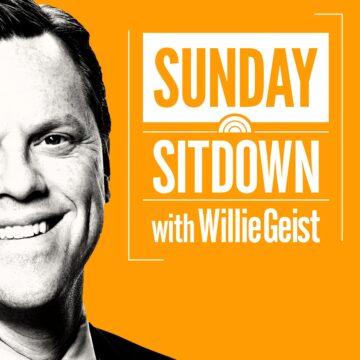This past fall, hundreds of people gathered at The Explorer’s Club in New York City. The building was once a clubhouse for famed naturalists and explorers. Now it’s an archive of ephemera and rarities from pioneering expeditions including treks to the North Pole, the moon, and the world’s tallest mountains. But this latest gathering was held to celebrate the first biological census of its kind — an effort to count all of the squirrels in New York City’s Central Park.

New York’s eastern grey squirrels are so much a part of the urban fabric that for a long time, it never occurred to anyone to study urban squirrels at all, which are everywhere today but were absent just a few centuries back.
The Exotic Squirrel
“[In] the mid 19th century, you could walk through a place like Boston or Philadelphia or Manhattan and you would not see a single squirrel,” explains historian Etienne Benson. Cities of the early 19th century were almost entirely squirrel-free. You could really only find squirrels if you left the city and ventured deep into the woods.

In fact, squirrels were considered so elusive that the very wealthy liked to keep them as exotic pets. In 1856, an article in the New York Times described how one such pet escaped from its owner’s home in Manhattan. When it was discovered in a tree, a crowd of people gathered in amazement, trying to lure it down.
The squirrels that we all take for granted as we walk through the park or on our way to the gym or the office are only there because we put them there. Squirrels were intentionally put into parks where they were fed and sheltered.

In 1847, Philadelphia became the first city we know of to introduce squirrels. Like many eastern seaboard cities at that time, it was already a highly urban environment. People yearned for a taste of the wilderness that the squirrel was seen to embody. Eastern grey squirrels were captured from forested areas and brought into the city. A few other east coast cities followed suit, but the number of squirrels was small. Philadelphia had only three, which were given shelter and a fence so they could stay safe from predators in their little squirrel home.
This trial run unfortunately did not go so well for the squirrels. The cities of the 19th century just didn’t have the kind of green space and tree cover we see today and the squirrels needed trees for food. A wild squirrel requires deciduous, nut-bearing plants, like oak trees, in order to survive. The feed provided by the city often proved to be either insufficient or nutritionally worthless, so those first squirrels either died off or were sold as pets.
Squirrel-Friendly Beautification
In the late 19th century, city green spaces like New York’s were undergoing a transformation. These public spaces had been multi-purpose fields used for everything from cattle grazing to slaughterhouses and militia training, but they were becoming spaces of leisure. Cities were beautifying. But even more critically, parks were being designed to mimic the natural world.

Designers like Calvert Vaux and Frederick Law Olmstead pushed parks like Central Park and Prospect Park in New York in a new direction. “They were working with the existing geology and hydrology,” says naturalist Gabriel Willow, who specializes in animal species that live in urban environments. “They took naturally existing small ponds or marshy areas and made lakes out of them.” They also chose to keep the area’s dramatic rocky outcroppings instead of blasting them away, which is what had been done with the rest of the city’s grid.
These new natural-looking parks were filled with hedges, lakes, streams, and critically: oak trees. In turn, these oak trees provided plenty of acorns for squirrels. It was in this landscape in 1859 that the squirrels were reintroduced. Within a few years, what started out as just a few dozen squirrels roaming about soon become an uncountable horde (by 1920, rough guesses would put the number as high as 5000). In Central Park and beyond, squirrels became as commonplace as the leaves on the oak trees in which they built their nests. As this new approach to urban parkland spread to other cities, the idea of populating them with squirrels traveled, too.
The More Than Human Community
Eastern grey squirrels were introduced again to places like Philadelphia and New Haven as well as West Coast cities like Seattle, Vancouver and San Francisco. North American squirrels were also introduced overseas to England, Italy, Australia, and South Africa. These squirrels also weren’t just benefiting from this new, lush environment in itself. At the time, people considered it their moral obligation to feed them. “Up until the early 20th century,” explains Benson, “the dominant way of understanding the proper relationship between humans and animals in the city [was] centered on charity. It [was] centered on the idea that humans have an obligation, a responsibility to create a friendly welcoming environment for certain kinds of animals to flourish” — at least: certain kinds of animals.

John James Audubon’s account of bird species refers to the “bloodthirsty hawk” and “rascally raven.” People would hunt birds of prey because they were considered “mean.” Meanwhile, other animals like pigeons and squirrels were considered peaceful. More than that, they interacted with humans. In terms of the thinking of the times, the sight of an undomesticated animal not only approaching but effectively communicating by soliciting food was a sign of its civilized nature.
This collective experience of solicitation and charity and civilized discourse between humans and birds and squirrels was eventually articulated in a name: the “more than human community.” This model really worked out for the squirrels. By the late 19th and early 20th century, squirrels had everything they needed to thrive and multiply. They had nuts, trees and humans feeding them extra food while also killing off a lot of their natural predators.
As the 19th century led into the 20th, squirrels were busy spreading out and enjoying the largesse of cities and suburbs and leafy college campuses. No one stopped to wonder if there could be such a thing as too many squirrels, which might have been a mistake.
Attacking the Grid
Security expert Matthew Harper worries about an ongoing attack against the power grid being led by squirrels. “In the case of the utility infrastructure, it’s not nation-state actors, it’s the humble squirrel that’s causing most of the issues.” By some estimates, one-quarter of all power outages are squirrel-related.

Squirrels need to build nests, and they usually build those nests in trees, but they also build them in anything that looks like a tree, like utility poles or transformers. A squirrel’s incisor teeth never stop growing, so they have to chew to keep them filed down. They mostly chew bark and branches and nuts, but they also chew things like power cables. So inevitably some unlucky squirrel will gnaw through the insulation of a powerline or step on two exposed wires at the same time. The circuit is ruined and the poor squirrel loses its little life.
To keep track of all these outages, Matthew Harper runs a (slightly tongue-in-cheek) website called Cyber Squirrel One, which tracks all major squirrel-related power outages, and there’s no shortage of incidents.
In November of 2018, a single roving squirrel knocked out three substations in Upstate New York, causing a string of power outages for more than 12,000 people.There was a case in 2009 where a squirrel impacted 55,000 people in Canada. Squirrels have also shut down colleges, shopping malls and polling stations on election day.
The most memorable incident, however, happened in December of 1987. In the 1980s, the New York Stock Exchange controlled 85% of the world’s stocks, but there was also a new rival exchange in town chipping away at their market share: the Nasdaq. The Nasdaq was an automated exchange that ran on computers. It didn’t need traders, so the 4000 traders on the floor or NYSE — who made trades in person, by hand — hated it. So at least some people had cause for celebration when the system ran into a serious issue.
For 82 minutes, on December 9th, 1987, Nasdaq was offline, losing an estimated 20 million trades, all of which were later traced back to a squirrel. This creature had chewed through a powerline in Connecticut from which Nasdaq drew its electricity.
America’s squirrels have also been wreaking havoc overseas. In Great Britain, the eastern grey squirrels introduced in 1876 quickly began to displace the native red squirrel, driving it to near extinction. Now there’s only a few small pockets of red squirrels left in northern England and Scotland despite a massive eradication campaign to keep the American invaders out of the Scottish highlands. In Europe, they’re officially an invasive species.
The Ecological Model
Even as Americans squirrels were taking out shopping malls and stock exchanges and invading foreign countries, the very things that had allowed them to proliferate in the first place were slowly being taken away.
Starting in the mid-20th century, ecologists, wildlife managers and park officials started to re-examine America’s approach to wildlife. They began to argue that predators like coyotes and hawks should no longer be hunted for the sake of a more than human community.
In this new ecological model, the ideal environment was no longer one that corresponded to notions of civilized versus uncivilized species, but one in which a variety of species (both predator and prey) maintained a natural population balance with only minimal human intervention.

It took a few decades for this idea to spread from the national parks into the cities, but by the 1980s it had arrived. A variety of species that prey on squirrels, like hawks, now are a regular part of the urban landscape in places like New York City, and feeding squirrels has no place in the new ecological model. Providing bread and other unnatural foods can lead to a variety of health problems. And acclimating squirrels to hand-feeding can make them overly dependent on humans and possibly prone to unstable population booms.
Team Ecology vs. Team Fat Squirrel
The New York City Parks Department is currently proposing a rule change that would make it illegal to feed any wild animal in the parks. No human-to-animal feeding, period. Not everyone is on board. At a recent hearing, several dedicated squirrel- and bird-feeders spoke up against the ban.

Different people provided different arguments for why feeding should continue, and exactly what impacts the blanket ban would have on wildlife populations is unclear, but regardless of the ecological impact, the biggest takeaway from the debate over the ban is that the concept of the “more than human community” has never fully gone away.
Naturalist Gabriel Willow believes there is a different way to connect to these animals — by keeping a respectful distance, we can observe and appreciate behaviors that we don’t get to witness when we invite a squirrel to eat out of our hand.
There’s more than one way to connect to the animals with whom we share our cities. Whether it’s listening to the yipping of coyotes in the middle of the night, setting up a webcam for the hawk nest outside your window, or counting all the squirrels in Central Park. In March, Jamie Allen and the other team members of the squirrel census finished gathering their data. They plan to reveal the squirrel abundance number in June.
![352- Uptown Squirrel [update]](https://xxpodcastxx.com/wp-content/uploads/2024/05/Squirrel_in_Central_Park_-_Manhattan_New_York_City-600x398-1.jpg)






